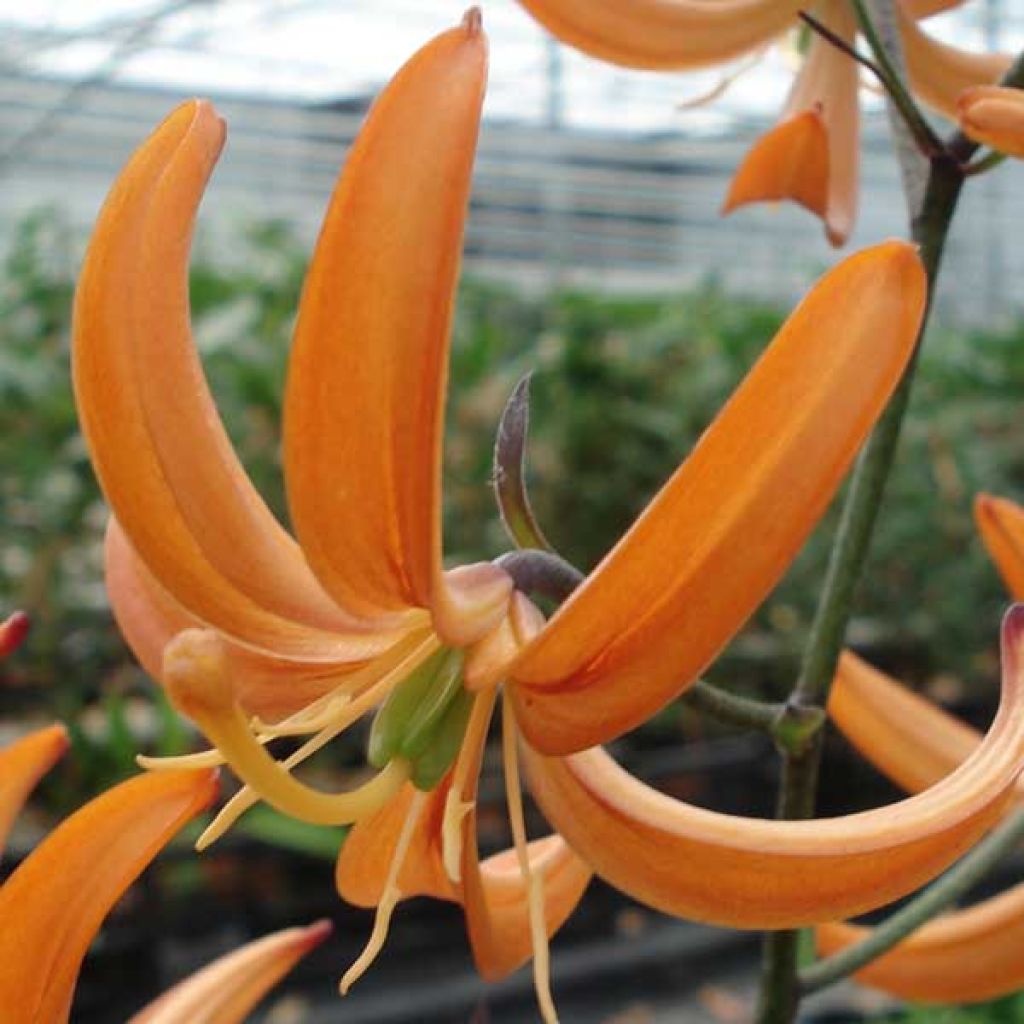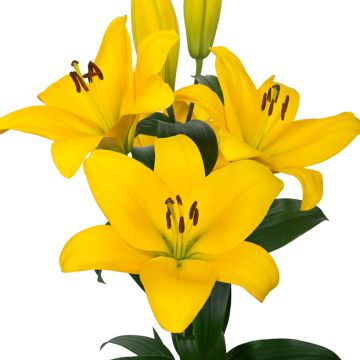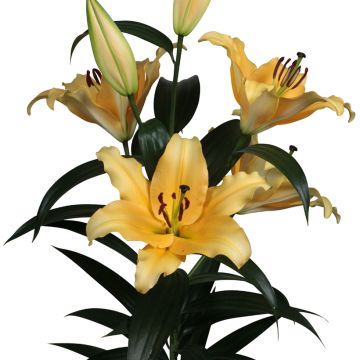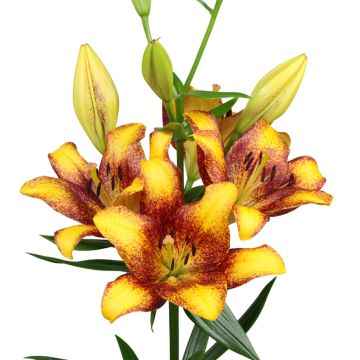

Lis Botanique Orange Marmelade


Lis Botanique Orange Marmelade


Lis Botanique Orange Marmelade
Lilium martagon Orange Marmelade - Lily
Lilium martagon Orange Marmelade
Martagon Lily, Turk's Cap Lily
Well-packaged bulbs. Good quality.
Marie-Simone R., 28/12/2018
This item cannot be shipped to the selected country
Delivery charge from €5.90
More information
Schedule delivery date,
and select date in basket
This plant carries a 6 months recovery warranty
More information
We guarantee the quality of our plants for a full growing cycle, and will replace at our expense any plant that fails to recover under normal climatic and planting conditions.
From €5.90 for pickup delivery and €6.90 for home delivery
Express home delivery from €8.90.
Does this plant fit my garden?
Set up your Plantfit profile →
Description
Lilium martagon 'Orange Marmalade' has tall flowering stems in June, bearing up to 30 fragrant small flowers. A lovely bright orange colour and recurved petals complete its exotic appearance. It takes a little longer to establish, but it is a sturdy bulbous plant that adds true personality to the garden and will faithfully bloom every year. This lily will tolerate limestone. A rarity for collectors or enthusiasts of original plants.
Lilium martagon Orange Marmalade is the result of cross-breeding between L. martagon, L.hansonii from Korea and L. tsingtauense, native to Eastern China and Korea. 'Orange Marmalade' has pendulous, orange flowers. The plant will reach 90 to 100 cm (35 to 39in) high. The very bright flowers bloom in June when each stem bears 20 to 30, pleasantly fragrant flowers with a diameter of 4 cm (2in) which attract butterflies. The leaves are lanceolate, medium green, and slightly shiny.
This lily establishes with a little more difficulty than other Asian lilies. It may take an additional season before flowering, and planting conditions must be carefully considered. Martagon lilies sulk when moved and need to settle in. The Martagon lily and its hybrids are perfect for the edges of woodlands, well-drained slopes, and slightly wild meadow areas. You can grow these lilies with perennial plants as they appreciate having their feet in the shade. They also thrive in moist rockeries and containers and bring a very refined touch to bouquets.
Report an error about the product description
Plant habit
Flowering
Foliage
Botanical data
Lilium
martagon
Orange Marmelade
Liliaceae
Martagon Lily, Turk's Cap Lily
Cultivar or hybrid
Other Hybrid Lilies
Planting and care
'Orange Marmalade' hybrid martagon lily is a little more difficult to establish than other lilies. This lily is one of the few that can tolerate limestone without any issues. Perfect drainage is necessary, a rocky soil will be perfect. Bulbs rot in a substrate that is too wet during their dormancy period. It is strongly advised not to add water-retaining compost to the martagon lily or any of its hybrids, but adding well-rotted leafy compost in autumn is a good idea. Plant the bulbs in full sun or partial shade, preferably in spring, 15 cm (6in) deep in a pocket of soil mixed with leaf soil and gravel. Surround them with a layer of sand that will prevent rot and slug attacks, while allowing them to grow more easily. Mark the planting location, as vegetation only starts in April. If red lily beetles appear, treat them immediately, as their larvae can devour all the leaves. The most effective method is to catch them by hand, be careful as they drop as soon as you touch them. After flowering, it is a good idea to cut the faded flowers halfway to keep the bed beautiful during the summer. This lily is well-suited for pot cultivation. Plant 1 to 5 bulbs in a deep pot. Water a little and place your pots in a frost-free spot. Bring them out in spring and enjoy their beauty on your terrace!
Planting period
Intended location
Care
-
, onOrder confirmed
Reply from on Promesse de fleurs
Haven't found what you were looking for?
Hardiness is the lowest winter temperature a plant can endure without suffering serious damage or even dying. However, hardiness is affected by location (a sheltered area, such as a patio), protection (winter cover) and soil type (hardiness is improved by well-drained soil).

Photo Sharing Terms & Conditions
In order to encourage gardeners to interact and share their experiences, Promesse de fleurs offers various media enabling content to be uploaded onto its Site - in particular via the ‘Photo sharing’ module.
The User agrees to refrain from:
- Posting any content that is illegal, prejudicial, insulting, racist, inciteful to hatred, revisionist, contrary to public decency, that infringes on privacy or on the privacy rights of third parties, in particular the publicity rights of persons and goods, intellectual property rights, or the right to privacy.
- Submitting content on behalf of a third party;
- Impersonate the identity of a third party and/or publish any personal information about a third party;
In general, the User undertakes to refrain from any unethical behaviour.
All Content (in particular text, comments, files, images, photos, videos, creative works, etc.), which may be subject to property or intellectual property rights, image or other private rights, shall remain the property of the User, subject to the limited rights granted by the terms of the licence granted by Promesse de fleurs as stated below. Users are at liberty to publish or not to publish such Content on the Site, notably via the ‘Photo Sharing’ facility, and accept that this Content shall be made public and freely accessible, notably on the Internet.
Users further acknowledge, undertake to have ,and guarantee that they hold all necessary rights and permissions to publish such material on the Site, in particular with regard to the legislation in force pertaining to any privacy, property, intellectual property, image, or contractual rights, or rights of any other nature. By publishing such Content on the Site, Users acknowledge accepting full liability as publishers of the Content within the meaning of the law, and grant Promesse de fleurs, free of charge, an inclusive, worldwide licence for the said Content for the entire duration of its publication, including all reproduction, representation, up/downloading, displaying, performing, transmission, and storage rights.
Users also grant permission for their name to be linked to the Content and accept that this link may not always be made available.
By engaging in posting material, Users consent to their Content becoming automatically accessible on the Internet, in particular on other sites and/or blogs and/or web pages of the Promesse de fleurs site, including in particular social pages and the Promesse de fleurs catalogue.
Users may secure the removal of entrusted content free of charge by issuing a simple request via our contact form.
The flowering period indicated on our website applies to countries and regions located in USDA zone 8 (France, the United Kingdom, Ireland, the Netherlands, etc.)
It will vary according to where you live:
- In zones 9 to 10 (Italy, Spain, Greece, etc.), flowering will occur about 2 to 4 weeks earlier.
- In zones 6 to 7 (Germany, Poland, Slovenia, and lower mountainous regions), flowering will be delayed by 2 to 3 weeks.
- In zone 5 (Central Europe, Scandinavia), blooming will be delayed by 3 to 5 weeks.
In temperate climates, pruning of spring-flowering shrubs (forsythia, spireas, etc.) should be done just after flowering.
Pruning of summer-flowering shrubs (Indian Lilac, Perovskia, etc.) can be done in winter or spring.
In cold regions as well as with frost-sensitive plants, avoid pruning too early when severe frosts may still occur.
The planting period indicated on our website applies to countries and regions located in USDA zone 8 (France, United Kingdom, Ireland, Netherlands).
It will vary according to where you live:
- In Mediterranean zones (Marseille, Madrid, Milan, etc.), autumn and winter are the best planting periods.
- In continental zones (Strasbourg, Munich, Vienna, etc.), delay planting by 2 to 3 weeks in spring and bring it forward by 2 to 4 weeks in autumn.
- In mountainous regions (the Alps, Pyrenees, Carpathians, etc.), it is best to plant in late spring (May-June) or late summer (August-September).
The harvesting period indicated on our website applies to countries and regions in USDA zone 8 (France, England, Ireland, the Netherlands).
In colder areas (Scandinavia, Poland, Austria...) fruit and vegetable harvests are likely to be delayed by 3-4 weeks.
In warmer areas (Italy, Spain, Greece, etc.), harvesting will probably take place earlier, depending on weather conditions.
The sowing periods indicated on our website apply to countries and regions within USDA Zone 8 (France, UK, Ireland, Netherlands).
In colder areas (Scandinavia, Poland, Austria...), delay any outdoor sowing by 3-4 weeks, or sow under glass.
In warmer climes (Italy, Spain, Greece, etc.), bring outdoor sowing forward by a few weeks.













































